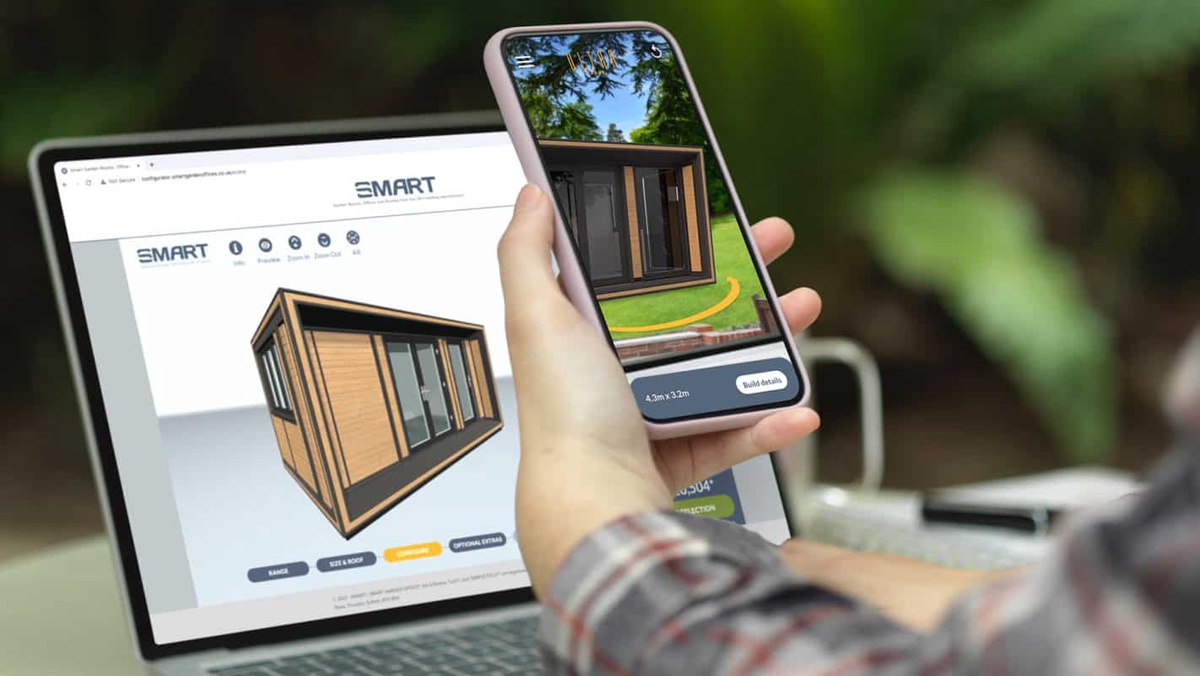The digital age has brought myriad transformations to the consumer market, with online shopping at its forefront. Among the recent innovations that have turned heads and prompted discussion is AR eCommerce. This groundbreaking approach is not just another techy term but is poised to redefine how consumers interact with online marketplaces. Augmented reality, once confined to the realms of video games and specialized applications, has firmly entrenched itself in the world of e-commerce, providing consumers with an enriched and immersive online shopping experience that brings products to life.
What Exactly is AR eCommerce?
At its core, AR eCommerce services refers to integrating augmented reality within online shopping platforms. What does this mean for the moderate consumer? It's a blend of the digital and the real, merging online convenience with tangible world visualization. Imagine browsing through a store online and virtually placing a product in your environment. Be it trying on a pair of shoes, positioning furniture in your living room, or even visualizing how a particular shade of paint might look on your bedroom wall. This synergy of real and virtual worlds ensures a more personalized and interactive shopping journey.
Benefits of Using AR in Online Shopping
- Enhanced Product Visualization: AR eCommerce allows consumers to visualize products in real-time and in their environment. For instance, imagine trying out a new couch in your living room without having it delivered.
- Reduced Return Rates: With a clearer understanding of products, customers make more informed decisions. Consequently, there's a reduction in return rates, saving businesses time and money.
- Boosted Customer Engagement: AR makes shopping interactive. Customers are more likely to spend time exploring products, which can lead to increased sales.
Implementing AR for eCommerce: A Step-by-Step Guide
- Identify the Need: Start by assessing which products would benefit most from augmented reality. Not all items need AR visualization, but those that do can significantly enhance user experience.
- Choose the Right AR Development Platform: Numerous platforms are available for AR development. Research and select one that aligns with your eCommerce goals and budget.
- Create High-Quality 3D Models: The success of AR eCommerce largely depends on the quality of 3D models. Ensure they are realistic, detailed, and optimized for mobile viewing.
- Integrate AR into Your Website or App: Once ready, integrate the AR functionality into your platform. This ensures a seamless user experience, encouraging more people to use the feature.
- Promote the New Feature: Let your customers know about the new AR capabilities. Use email campaigns, social media, or even blog posts to spread the word.
Challenges to Anticipate
Like all technologies, AR eCommerce comes with its set of challenges:
- High Development Costs: Creating AR experiences can be costly, especially for startups or small businesses.
- Technical Glitches: Augmented reality for eCommerce is relatively new, and occasional technical issues are inevitable.
- Need for Continuous Updates: Regular updates are essential to keep up with evolving technology and consumer expectations.
Success Stories: Brands Winning with AR
Several brands have successfully integrated AR into their eCommerce strategies, reaping significant benefits.
- Ikea Place App: Ikea's app allows users to visualize home furniture before purchasing. It's become a benchmark in AR eCommerce applications, increasing customer satisfaction and reducing returns.
- Sephora's Virtual Artist: This beauty brand uses AR for eCommerce to let customers try makeup virtually. The results? Boosted sales and heightened brand engagement.
By integrating AR, these brands have enhanced the shopping experience, driving both engagement and revenue.
The Future of AR in eCommerce
So, what's next for AR eCommerce? We can expect even more immersive and personalized shopping experiences as technology evolves.
- Personalized Avatars: Imagine creating a digital version of yourself to try on clothes or accessories online. This personalization can revolutionize fashion eCommerce.
- Interactive Shopping Assistants: Augmented reality can introduce virtual shopping assistants. These AI-driven entities can guide users, answer queries, and provide recommendations.
- Blended Reality Stores: We might see stores that combine physical and digital realms. Shoppers can walk in, use AR to gather information, visualize products, and make purchases.
Conclusion
In conclusion, AR eCommerce isn't just a trend—it's the future of online shopping. As businesses adapt, those who leverage augmented reality for eCommerce effectively will undoubtedly lead the pack. Therefore, now's the time to explore, experiment, and embrace this transformative technology.


No comments yet